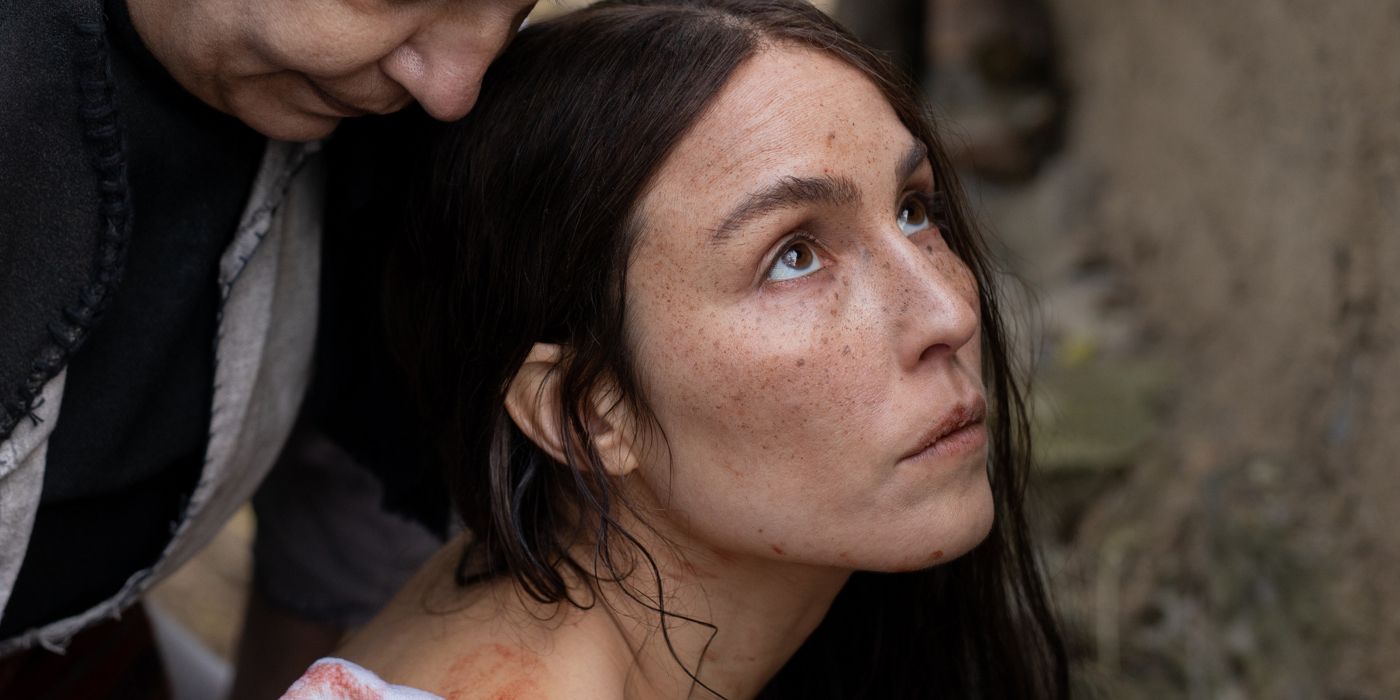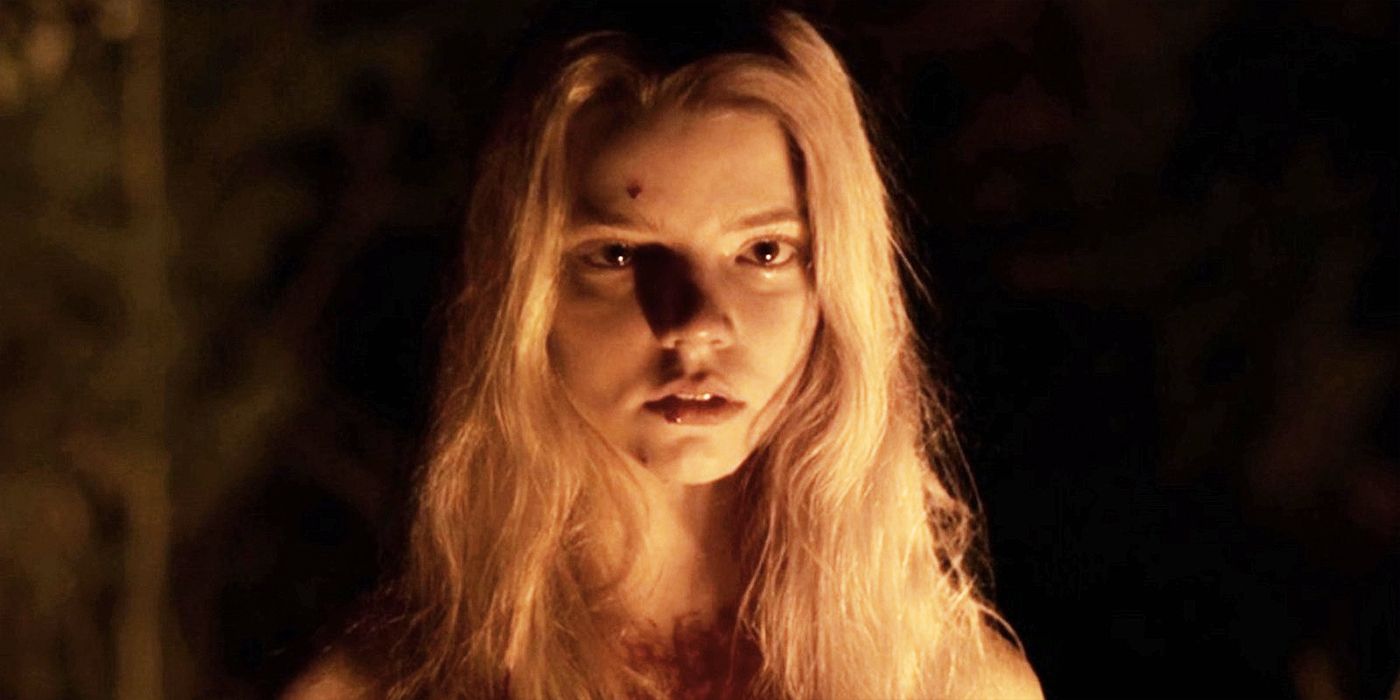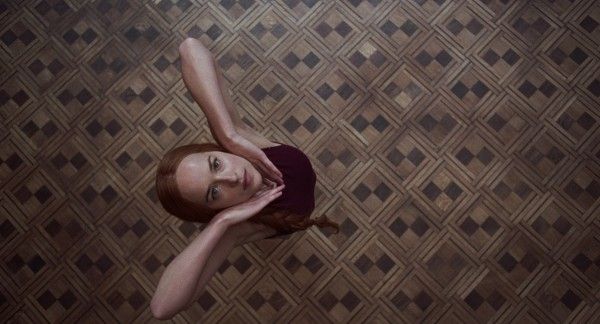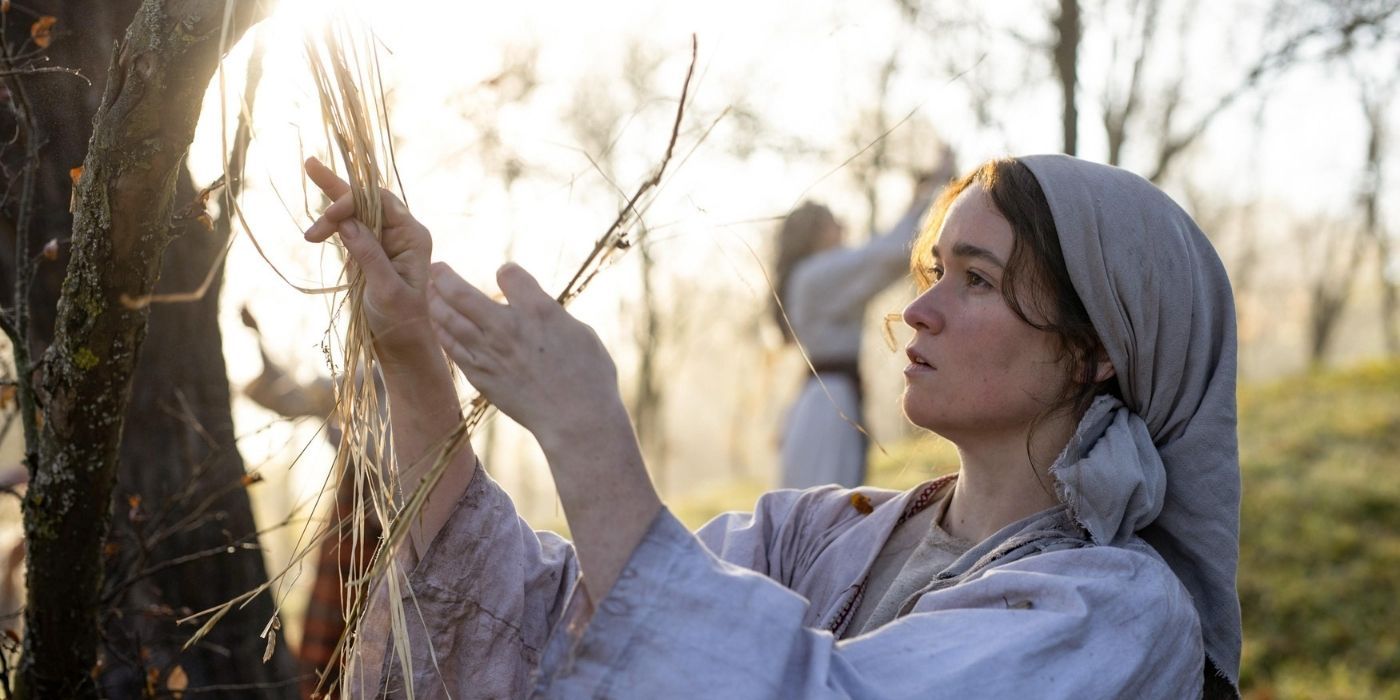The idea of witchcraft has been weaponized against women for centuries. Of course, all manner of bizarre logic and reasoning functioned behind witch trials, but a common denominator in its puritan crusade was the suppressing of female expression. The cry of "witch" became synonymous with the bell toll, instilling enough fear that women were forced to remain seen and not heard, Madonnas and not whores, contented and not ambitious, demure and not passionate. However, thanks to contemporary horror cinema, this treatment of witchcraft has dramatically changed: as horror has used witchcraft as a vehicle of feminist rage and, by proxy, female empowerment. To explore this idea further, we'll be taking a look at three works of modern cinema that use witchcraft to explore women's frustration, and what this may represent within feminist discourse. The movies in question, which will be addressed in chronological order, are The Witch (2015) Suspiria (2018), and You Won't Be Alone (2022).
To begin with Robert Egger's The Witch, the film's approach to witchcraft is very traditional, due to its events taking places in the 1630s. The family are strictly bound by ideas of religious piety and take their Puritan values and practices painfully seriously. However, despite all of these elements of a period drama, The Witch can be interpreted as a morbid coming-of-age narrative, much like Stephen King's Carrie (1974). The family's and film's piviotal character, Thomasin, played by the beautifully bewitching Anya Taylor-Joy, is an adolescent: she is within the limbo of little girl and adult woman. Her growing curiosity of witchcraft and witches' attraction to the darkness, primal connection to the earth, and sexual desire are all things that initally terrify her but grow to fascinate her. In regards to Thomasin's interactions and body language, she begins as demure, poised and rather quiet. However, by the climax of the film, she is a fluid and free-moving spirit, laughing manically as she joins the suggested "coven". This tranisiton from a shy and scapegoated child of the family to an empowered, uninhibited young woman. Yes, the contexts of dealing with the devil and the rampant animal sacrifices are grotesque and, at times, difficult to watch, but it's sort of... nice to see Thomasin happy. Throughout the film, it appears that Thomasin is scapegoated and stigmatised for her feminity: she is accused of being a seductress, the instigator of problems and issues - whereas, the boys and men get away with everything. Overall, The Witch is a tale of metaphorisis, as most coming-of-age stories are.It follows a young girl, denied of any oppurtunity for expression, and her transformation into into womanhood, in which she expresses her more impusive and carnal urges, and can truly release and revel in her emotions. Does that not sound like puberty to you?
As suggested earlier, The Witch uses the coven to portay women as a united force, Suspiria very much does the same. Dario Argento's 1977 original has become praised and renowned for its unique use of colour and cinematography. However, it is fair to say that the lore of his witches and what they stand for seems underdeveloped and confusing, as audiences can be left unsure of how witchcraft serves the overarching story. That's where Luca Guadagnino's 2018 of the same name adaptation comes in. Featuring female titans of cinema Tilda Swindon, Dakota Johnson, and Chloë Grace Mortez, this version of the technicoloured classic takes a much more gritty and dark approach - as if the subject matter wasn't dark already! As is explored in Thomasin's character in The Witch, Suspiria very purpsoefully uses movement and the body as a vechile for witchcraft and, by proxy, female expression. Set in a dance school, Suspiria's choereogaorhy feels very deliberate in reagrds to conveying its themes. Johnson's memserising but feral movements show us an unleashing of carnal passion and desire, very enctracing - akin to a witch's spell, you might say. Moreover, the adaption is still set in 1977, meaning that the time period and polital climate of this film's setting is also vey important to its themes. We have the backdrop of the cold war, creating a sense of political suffocation and tension. Also, in terms of women's rights, the 1970s was hardly an easy time. Yes, things had progressed - certainly since way back in Thomasin's day - but this period still held many stereotypes and expectations for women. The fact that the film takes place in a ballet school, or, rather, a witches' coven fronting as a ballet school, demonstrates that there is still an ideal of women being demure and delicate creatures, deisgned to be primed and poised for the gaze of the audience. However, the freedom that is found in the writhing and interpretative dancing sheds these female stereotypes. Another one of Suspiria's main themes is that of matriarchal relationships and generational feminism. In contrast to Thomasin, who is very much shunned and berated by her own mother and her Puritan values, Susie (Dakota Johnson) is introduced to formidable and powerful matrons that wish her to realise her full potenital within the coven. This captures an essence of female empowerment being passed down through the generations, becoming greater and more determined every time. This is encapsulated when it is reavealed that Susie is the most powerful witch of all - Mother Suspiriorum. Her title conveying that she will be the next to pass down this knowledge and pass on the mantle. In conclusion, Suspiria stands as a more modern counterpart to The Witch, exploring similar themes of women's frustation and their need to express their supressed emotions and sexuality. However, the former offers the comradry of the coven - much like the cult-classic The Craft (1996) - taking girl power to a whole new and delightfully sinister level.
Finally, in our journey we have the recent film, Goran Stolevski's You Won't Be Alone. This time we are going back in time, again - specifically, to 19th century Macedonia. The difference in this case is that we are not following a prototype: this central character does not become a witch, for she already is one. However, we can see potential connections to how witches and witchcraft are explored in The Witch early on in the film. The witch in question, named Old Made Maria (Anamaria Marinca) - but we'll call her Maria, for short - is hellbent on aquired a newborn babv. After coming across one with an (understandlably) distressed mother, a deal is made that the child will be given to Old Maid Maria, when she turns 16. Again, we see themes of witches being linked to women coming of age, the pivotal time in our lives in which we wish to explore our emotions and urges, but are often confronted with shame and disapporval. (This being particualrly relelvant to women, for reasons dicussed eariler.) Here, we have an interesting mother-daughter relationship and the young Nevena is in awe that the natural beauty of the world around her. However, after a sinister encounter with a shepard, we see that Maria is embittered towards men and Nevena (Sara Klimoska) is niave and unaware of their foilbles. This counteracts traditions of witches being seductresses, as myths gone by have dictated. Overall, Maria proves a vengeful but intellectual antagonist and witch. She observes patriarchal institutions and comes to understand what is expected of women in the society around her. However, in the spirit of true feminist rage, she does not engage in it. For example, she comes to understand that "eye water" (or tears) is something that men want but she herself cannot produce. Maria is not a vulnerable and emotional flower, as men want her to be. She is calculating, logical, and a complete survivialist. Like Suspiria, You Won't Be Alone places emphasis on women's history, and becoming more enlightened through the generations. Even with the film's tragic and bitter end, there still remains a poignant determination for a brighter and better future.
Overall, these films and their subject matter may appear to purely villianise women on the surface. However, if we choose to look a little deeper into their surroundings, their culture, their desires, and their motivations, it might be fair to call them anti-heroes. These witches all revolt against feminine stereotypes and institutions in order to express their own brands of womanhood on their own terms. Oh, and who doesn't love a little gore and black magic to get such an empowering message across?




